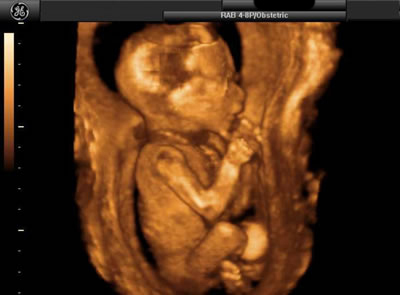Determining Baby Gender With 3D and 4D Ultrasound
With 3D and 4D (in-motion) ultrasounds offering amazingly clear views of an unborn baby, it’s no surprise that gender can almost always be determined using this technology, either in a medical setting or at a freestanding commercial fetal imaging center.
Most “keepsake†ultrasound businesses promise to determine gender after 18 weeks’ gestation (some even say you can come back for a free second ultrasound if the first is inconclusive; one company offers a $100 gift certificate for baby clothes if its gender ID proves wrong).
Typically, most parents-to-be who seek out a 4D ultrasound do so between the 27th and 34nd week of pregnancy. Some get more than one, of even one per trimester. One center recommends that if you want to come in twice space your visits so that one falls between week 20 and 24 and the second between week 27 and 32.
Some of the factors that might interfere with an image capable of conclusively revealing gender are: the position of the fetus, the amount of amniotic fluid and the tissue thickness (weight) of the mother. Some babies may obscure their genitals with their feet or hands, or the placenta may get in the way. Others may be facing the “wrong way.†Ask if your sonographer is trained in using techniques that could move the baby safely into another position.
Position in womb hides gender of 18-week baby boy in this 3D ultrasound
